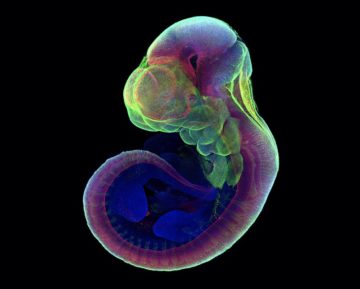Elizabeth Svoboda in Nature:
 In a laboratory in Israel, an incubator drum spins on a bench. The two glass bottles attached to the drum contain mouse embryos, each the size of a grain of rice, with translucent, pulsing hearts.
In a laboratory in Israel, an incubator drum spins on a bench. The two glass bottles attached to the drum contain mouse embryos, each the size of a grain of rice, with translucent, pulsing hearts.
Whole mouse embryos have typically been grown in vitro for only about 24 hours. But by carefully tuning the mix of chemicals that the mouse embryos are bathed in, a team at the Weizmann Institute of Science in Rehovot, Israel, managed to sustain five-day-old embryos outside the uterus for six more days1. This is about one-third of their normal three-week gestation and parallels some events in the first trimester of human embryonic development. Growing human embryos using similar techniques could allow scientists to study processes integral to human development that have long been hidden from view. “This may become the gold standard of looking at human embryonic biology,” says Jacob Hanna, a stem-cell biologist and lead researcher on the project at the Weizmann Institute of Science.
This and other recent breakthroughs, such as the creation of human-embryo-like structures from pluripotent stem cells, give scientists an arsenal of tools with which to probe further into early human development. Hanna’s drum incubator and these human-embryo models promise to allow more detailed study of processes such as gastrulation — in which three germ-cell layers develop into an array of tissues — and organ formation. Hanna and others say that understanding these crucial embryonic phases is essential to devising therapies that correct developmental errors, as well as to creating transplantable human organs.
More here.
